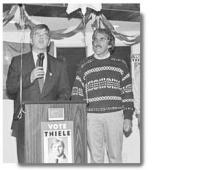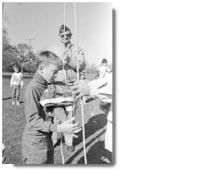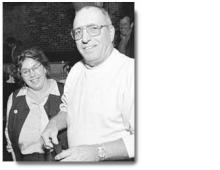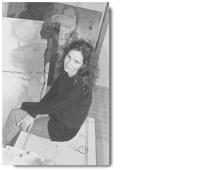Two-To-One For Thiele
Two-To-One For Thiele

Like feuding in-laws who come together reluctantly for a family wedding, people from across the political spectrum gathered at the Waterside in Noyac Tuesday night to cheer the passage of the Peconic County referendum, open-space proposals, and, almost as an afterthought, the overwhelming re-election of Republican Assemblyman Fred W. Thiele Jr.
"It's been a pleasure to serve you," Mr. Thiele said in a brief victory speech. He was interrupted by Southampton Town Supervisor Vincent Cannuscio, who has had his share of tussles with the Assemblyman.
Standing by Mr. Thiele's side and pointing to a television screen, which posted the results of the Republican's landslide victory over his Democratic challenger, Melissa Arch Walton, Mr. Cannuscio said, "There you are, Freddy."
"I couldn't have timed that any better," Mr. Thiele quipped as his supporters cheered.
At The Waterside
The Second Assembly District takes in East Hampton, Southampton, and part of Brookhaven. Of the 73,285 registered voters there, 56.4 percent, or 41,338, exercised their franchise.
Mr. Thiele took 62 percent to Ms. Walton's 31 percent, a tally of 25,685 votes to her 12,649. The remaining 7 percent was divided between Margaret A. Eckart, the Conservative candidate, and Michael J. Bradley of the Right-to-Life Party.
But the crowd at the Waterside, which included members of the Na ture Conservancy, the Group for the South Fork, Southampton and East Hampton Republicans, and a smattering of Democrats, who mingled tentatively, was more interested in the results of a nonbinding referendum seeking to gauge public support for the formation of Peconic County.
Peconic Passes
It passed resoundingly, with 70-percent in favor across the five East End towns. Shelter Island and East Hampton registered the loudest approval, 83 and 76 percent respectively. South ampton voters came out 70 percent for secession from Suffolk County and Riverhead and Southold, where the most resistance had been expected, weighed in at 66 and 68 percent.
Mr. Thiele, a champion of the move to secede, said, "It's the right time for Peconic County, because the people have waited 30 years." He praised supporters of the proposal "who got together on cold winter nights to put together a feasibility study. And after that was done, they knew they had to do a grass-roots campaign."
Hal Ross of Water Mill and Larry Cantwell, the East Hampton Village Administrator, who both serve on the board of Peconic County Now Inc., said they were "overwhelmed" by the results, which showed public support almost 3 to 1 in favor.
Legislative Pressure
"East Hampton was strongly for it. That doesn't surprise me," said Mr. Cantwell. "But I'm especially happy with the results in Riverhead and Southold."
Mr. Ross conceded that the referendum's success did not necessarily mean the State Legislature would act. "We'll bring every pressure we can to bear," he said.
Peconic will face challenges from both "the Democrats and the Republicans. We'll have difficulties with both of them," said Mr. Ross.
Mr. Ross and Mr. Cantwell both directed barbs at Mr. Cannuscio, who has publicly wavered in his support for Peconic in recent weeks.
Cannuscio Wavers
Mr. Ross said he was pleased the proposition fared as well as it did despite the fact "we didn't get the full support of the Supervisor of Southampton." Mr. Cantwell went a step further and said Mr. Cannuscio had tried "to sabotage" the effort.
In the meantime, Mr. Cannuscio was overheard talking on the telephone to a reporter. The formation of Peconic County would be an "uphill battle," he said and mentioned that he had received earlier that day a lengthy fax from a group of western Suffolk legislators who told him "if the East End wants to secede, they would not look too kindly on matching funds" for open space purchases.
"That's his problem," said Mr. Cantwell. "He's intimidated by that."
Yesterday afternoon, Mr. Cantwell added that the overwhelming support for Peconic must, for the movement to continue, send a message to elected officials all over the East End that their constituents want them to help get the proposal across in Albany.
Counted among them was State Senator Kenneth P. LaValle, whose First Senate District extends outside the proposed new county and who resisted the idea of the referendum.
Mr. LaValle, who will begin his 11th term in January, garnered nearly 71 percent of the votes cast in his district. The Democrat who ran against him, Gerald Manginelli, received 29 percent.




